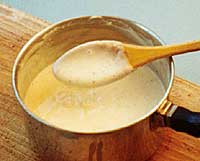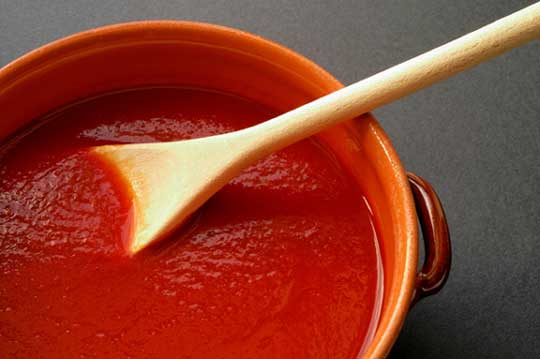Revelation: I like food that tastes good. This may seem like a very obvious statement, but when was the last time you really tasted something? A lot of the food we eat is good to us because it is familiar, not because the flavor dances on our palates. I want palate dancing food, gosh darn it! If you know me, you know that I have an extreme weak spot for Wendy's (#6 Spicy Chicken Sandwich Combo, medium size, no tomatoes, add cheese and pickles with a coke). However, recently, I began to question whether my Wendy's Achilles's heel exists because the food actually tastes good or because it is an emotional comfort food that helps me recall memories of eating the crispy chicken goodness when I was a kid with my mommy. Personally, I think the #6 is so good that I would classify it as a palate dancer, but most culinary snobs would probably say I like it because I just don't know any better.
Since I am in culinary school, it is probably a good idea if I at least learn what the culinary snobs are talking about before I ignore it and pull up to the Wendy's drive in window. This means I have to learn how to taste like them, right?
Let's take a step back...we all put our pants on one leg at a time and we all have the same taste buds. Anyone can learn to refine their tasting abilities (snobbery not required). Taste is simply one of our basic senses. The trick is learning how to interpret and analyze what you are tasting. Think back to elementary school when you had to look at the tongue diagram. If you didn't benefit from that in-depth of an elementary school education, or you were more concerned about recess, just look at the picture on the top of this blog post. We have the ability to taste salt, sweet, sour and bitter in various locations on our tongues. We can also taste the lesser known umami, which is savory. Great tasting food does pirouettes on the various taste buds creating a flavor profile that makes us smile blissfully without realizing we have sauce on our chin.
Ready to fire up those taste buds? Karine J, a fellow budding chef at Le Cordon Bleu, gave me a fab tasting guide that I wanted to share with all of my TCP Friends. Use the following questions to learn how to taste your food.
- What is the overall first impression in appearance, smell and taste? As mentioned in Sexy. how food looks will determine how much the diner enjoys their meal.
- What are the primary flavors? Can you taste salty? How does it tango with umami? What do you taste first? Are there many layers of flavor or only one overpowering flavor behemoth?
- What subtle aromas and flavors are present? Sometimes the best flavors wink at you at the end of the bite. Does that crème brûlée have a hint of lavender? Was that a honey sweetness lilting off the end of that pasta sauce?
- How do the components of the dish taste separately and together?
- Do any variations in texture or temperature enhance or detract from the dish? Spicy foods will seem even spicier when the food is served hot. Is that a nasty mush or a delectable cream?
- What ingredients and cooking techniques were used to create the dish? Can you taste every ingredient? Can you guess what might be in Big Mama's "special sauce"? (How much you wanna bet it's ketchup?)
- How could the dish be improved? Now don't get crazy. Don't go around acting like you are a Certified Master Chef just because you discovered your taste buds. Keep you opinions to yourself unless requested, please and thank you.
Now that I have shared the super hidden, ultra confidential, top secret secrets of culinary snob tasting, there are a few rules you must follow:
Rule 1) Don't get all rude and snotty with the cook just because you think you are a master taster now.
Rule 2) Slow down and enjoy your food
Rule 3) Try the #6 Spicy Chicken Sandwich at Wendy's
Rule 4) Cook!
Announcement: God is good! I am the new LA Cooking Examiner on Examiner.com! To read all of my articles, please use this link: http://www.examiner.com/cooking-in-los-angeles/aleya-williams. Don't fret, I am going to do my very best to make sure that my blog and Examiner.com pages have unique content. That means you should read them both! In fact, I highly encourage reading both, because the Examiner.com page could help me financially while I am in school (that means it is a paying gig). Think you got what it takes to be an Examiner? Click on my referral link to apply: http://exm.nr/lZviNw.
Enjoy eating, smile with your mouth full and be blessed!












